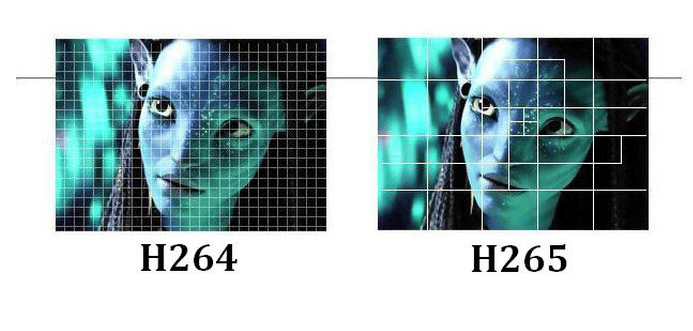
Expert in Camera Module Solution

Expert in Camera Module Solution

H.265 (H265), also called HEVC (High Efficiency Video Coding), is the new video compression standard after H. 264. Compared with the existing popular video coding standard H. 264, H.265 combines the original technologies with advanced techniques to significantly improve the bit-stream, build a better connection between time delay and algorithm complexity and enhance the coding quality, which leads to best optimizations considerably.
So what is the difference between H264 and H265 on earth? To make every reader understand the H.265 and H.264 intuitively, make best use of them and also show you why it’s should be a wise choice to convert H264 to H265, I make detailed H264 vs H265 comparisons on the most important aspects: Compression ratio, Quality and File size.
1. H.265 vs H.264 Compression Ratio
For video services, the ultimate goal of compressing a movie is to reduce the size of the movie file, so that it can take up less storage space, reduce the network bandwidth consumption in transmission and increase streaming speed.
Compared with H. 264, H. 265 has a higher compression ratio which is primarily used to further reduce the design flow rate, in order to lower the cost of storage and transmission.
In other words, at the same quality of coding, H.265 provides more powerful tools like CTU to save around 50% of the bit rate, and the coding efficiency can be doubled than H. 264. For example, in H. 264, each macroblock is fixed to the size of 16 x16 pixels, but the coding unit of H.265 can be widely chosen from a minimum of 8 x 8 to the maximum of 64 x 64.

2. H.265 vs H.264 Quality
You can also see how the two codecs affect video quality further from the picture below.

On the left hand side as the illustration shows is using traditional H.264 standard, and each macro block is fixed; In H. 264 coding technology, the giant sections of data is completely independent to each other, so coding distortion situations are likely to happen in border areas of the giant block.
It is H. 265 standard on the right, the size of code unit is determined by the regional information. From the image contrast, we can see the video quality enhancement and the more delicate character’s skin H. 265 presents, which is much better than H. 264.
3. H.264 vs H.265 File Size
The size of a video is defined as duration and bit rate. On the basis of the experiment on H.265 vs H.264 file size, we find that bit reduction is inversely proportional to video image quality and also positive to file size. As H.265 encodes the same information with lower bitrates but the same video quality when compared with H264, it’s advisable to convert the video from H.264 to H.265 for saving more space.
From this H.264 vs H.265 comparison above, now we know well that how H.265 is superior to H.264. Without doubt, H.265 will become a widely used codec in the near future as it's really one of the best ways to compress a video with original quality being remained.
Moreover, the increasing growth of video streaming on YouTube and other popular websites and 4K high definition devices arrive all the time, which urges you to find a more efficient way to stream, store and play videos. H.265 emerges as people require. This video coding format helps you to store your large amount of videos with smaller size, to stream your favorite movies with less network consumption. You can also benefit more from H.265 that provides a better visual quality.

The original article is from: https://www.videoconverterfactory.com/tips/h265vsh264.html